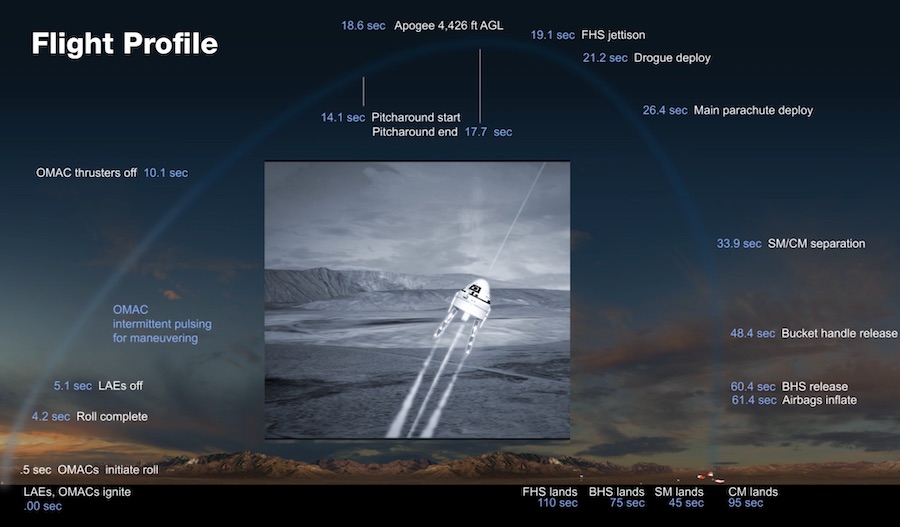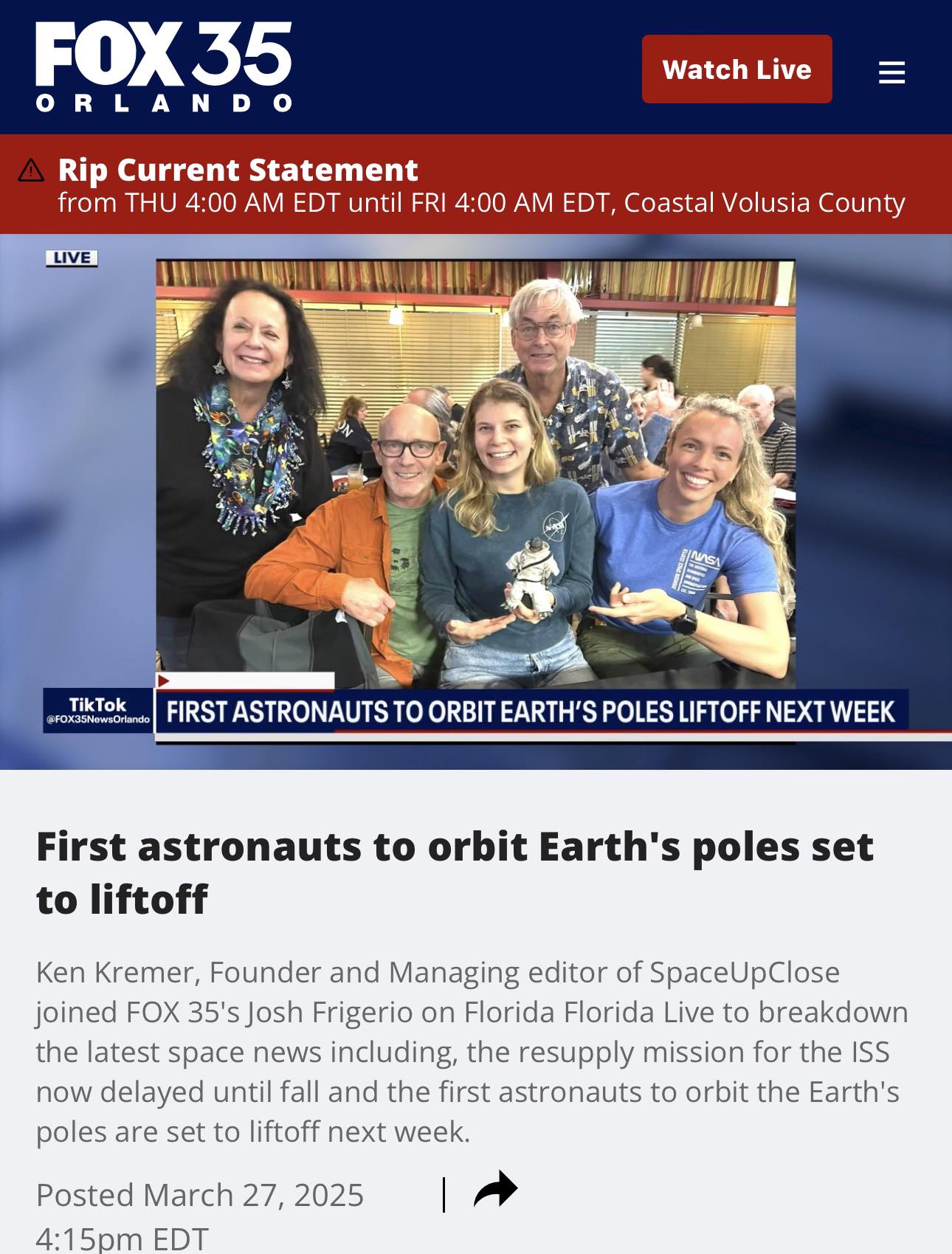
For SpaceUpClose.com & RocketSTEM
CAPE CANAVERAL, FL – A critical test of the launch abort system for the Boeing Starliner crew capsule called the Pad Abort Test is set to take place for this morning Monday, Nov. 4 from a test stand in White Sands New Mexico.
The test version of the Boeing’s CST-100 Starliner spacecraft and its service module now sit atop the test stand at White Sands Missile Range in New Mexico ahead of the Pad Abort Test.
The short test will only last about 95 seconds from launch to landing. The purpose is to demonstrate the spacecraft’s ability to quickly escape the launch pad and save the astronauts lives in the event of an rocket emergency on launch day.
The brief test is scheduled to begin at 9 a.m. EST ( 7 a.m. MST, 1400 GMT) with a three-hour window.
You can watch the test live on NASA TV- as requested by NASA Administrator Jim Bridenstine last week.
Live coverage is planned to start at 8:50 a.m., on NASA TV and the agency’s website.
Coverage will be adjusted as necessary within the window in case any issues cause a delay.
The 4 launch abort engines and multiple maneuvering engines will fire on the test stand and push the Starliner stack about 1 mile high.

The capsule will separate, deploy parachutes and land about 1 mile north of the test stand.
There are no astronauts inside. However a test dummy is seated and outfitted with sensors.
This will be Boeing’s first flight test as part of NASA’s Commercial Crew Program and will help evaluate the performance of the abort system prior to missions to the International Space Station with a crew onboard.
Watch this brief video:
Here are further details from NASA:
Boeing’s Pad Abort Test is part of NASA’s Commercial Crew Program work with the American aerospace industry — through a public-private partnership — to launch astronauts on American rockets and spacecraft from American soil for the first time since 2011. The goal of the program is to provide safe, reliable and cost-effective transportation to and from the International Space Station, which would allow for additional research time and increase the opportunity for discovery aboard humanity’s testbed for exploration.
The test is designed to verify that each of Starliner’s systems will function not only separately, but in concert, to protect astronauts by carrying them safely away from the launch pad in the unlikely event of an emergency prior to liftoff. During the test, Starliner’s four launch abort engines and several orbital maneuvering and attitude control thrusters will fire, pushing the spacecraft approximately 1 mile above land and 1 mile north of the test stand.
The spacecraft’s crew module will use parachutes with landing airbags to touch down at White Sands Missile Range. It will be recovered and brought back to Launch Complex 32 for evaluation and analysis.

For additional coverage, NASA’s launch blog, and more information about the mission, visit:
https://www.nasa.gov/commercialcrew
…

If all goes well NASA has officially announced that the launch of Boeing’s Starliner spacecraft on a United Launch Alliance (ULA) Atlas V rocket is targeted for Dec. 17 from Space Launch Complex 41 at Cape Canaveral Air Force Station (CCAFS) in Florida.
No astronauts will be flying aboard the mission dubbed OFT or Orbital Test Flight since its serving as a proving ground to test out all the spacecraft systems and ensure its safe to fly our precious human astronauts.
This Boeing Starliner uncrewed OFT launch with no astronauts aboard will serve as a full dress rehearsal test flight to the ISS and back.
The goal of the Commercial Crew Program is to end our 100% reliance on the Russian Soyuz capsule for launches to the ISS at a cost of more than $80 million per astronaut seat.
Starliner is being manufactured by Boeing at the Kennedy Space Center nearby the Vehicle Assembly Building in the Commercial Crew and Cargo Processing Facility (C3PF) facility formerly used to process NASA’s space shuttles.
The Boeing Starliner commercial crew vehicle will launch on a ULA Atlas V rocket augmented with two solid rocket boosters on astronaut ferry flight to and from the ISS for NASA.
Stay tuned here for Ken’s continuing Earth and Planetary science and human spaceflight news: www.kenkremer.com –www.spaceupclose.com – twitter @ken_kremer – email: ken at kenkremer.com
Dr. Kremer is a research scientist and journalist based in the KSC area, active in outreach and interviewed regularly on TV and radio about space topics.
………….
Ken’s photos are for sale and he is available for lectures and outreach events
Nov 23, 1 PM, Titusville, FL: “50th Anniversary Apollo 12 and NASA Return to the Moon with Project Artemis” at American Space Museum, Titusville, FL. Lecture free. Open to the public.
Website: www.spacewalkoffame.org




